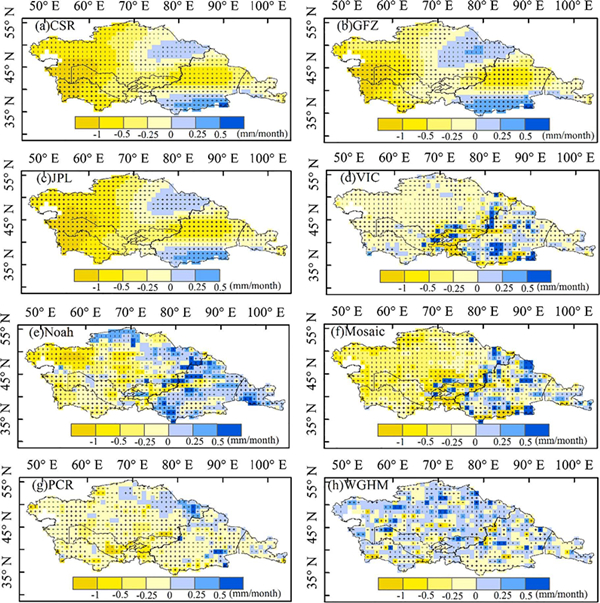Arid regions of Central Asia have sensitive ecosystems that rely heavily on terrestrial water storage. Therefore, Three Gravity Recovery and Climate Experiment (GRACE) satellite datasets and five global hydrological models (GHMs) were employed to explore the terrestrial water storage (TWS) changes over arid regions of Central Asia from 2003 to 2014.
A group of researchers from Xinjiang Institute of Ecology and Geography, Chinese Academy of Sciences found that the water storage was decreasing at a rate of 4.74 mm/year. Contrary to the prevailing declining water storage trends, northeastern Kazakhstan, and southern Xinjiang increased their water storage over the same period. The GRACE data showed that Turkmenistan, Uzbekistan and Kazakhstan experienced the most severe water depletions, while Tajikistan and northwest China experienced the least significant depletions.
Moreover, the water storage positively correlates with the precipitation; and negatively correlates, with a three-month lag, with temperature and potential evapotranspiration (PET). Partial least square regression (PLSR) had the high capability in simulating and predicting the TWS.
These results provide scientific evidence and guidance for local policy makers working toward sustainable water resource management, and the resolution of international water resource disputes among Central Asian countries.
This study titled “Temporal and spatial variations in the terrestrial water storage across Central Asia based on multiple satellite datasets and global hydrological models” was published in Journal of Hydrology.
Paper link: https://www.sciencedirect.com/science/article/pii/S0022169421000603?via%3Dihub

Fig. Spatial distributions of the linear trends from the monthly TWSA of the eight datasets, where the area with the cross signs means the significant changes at a 95% confidence level
